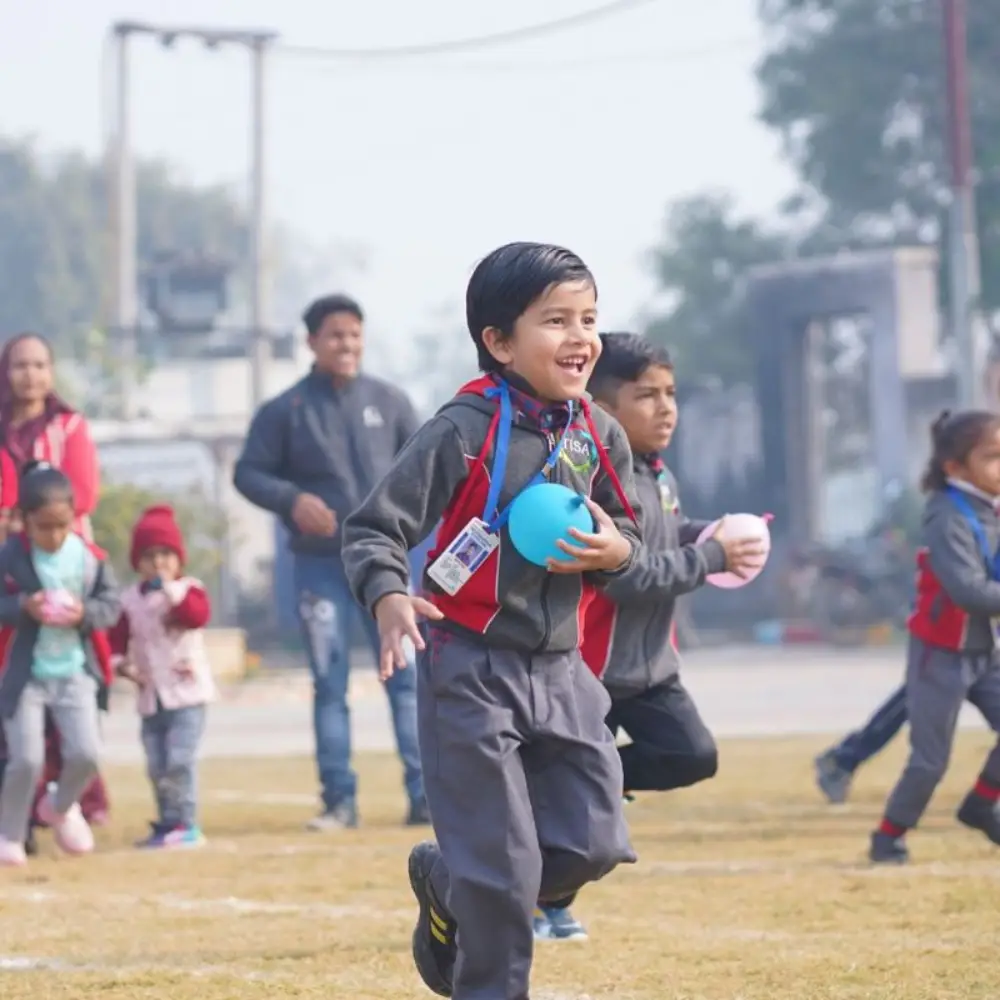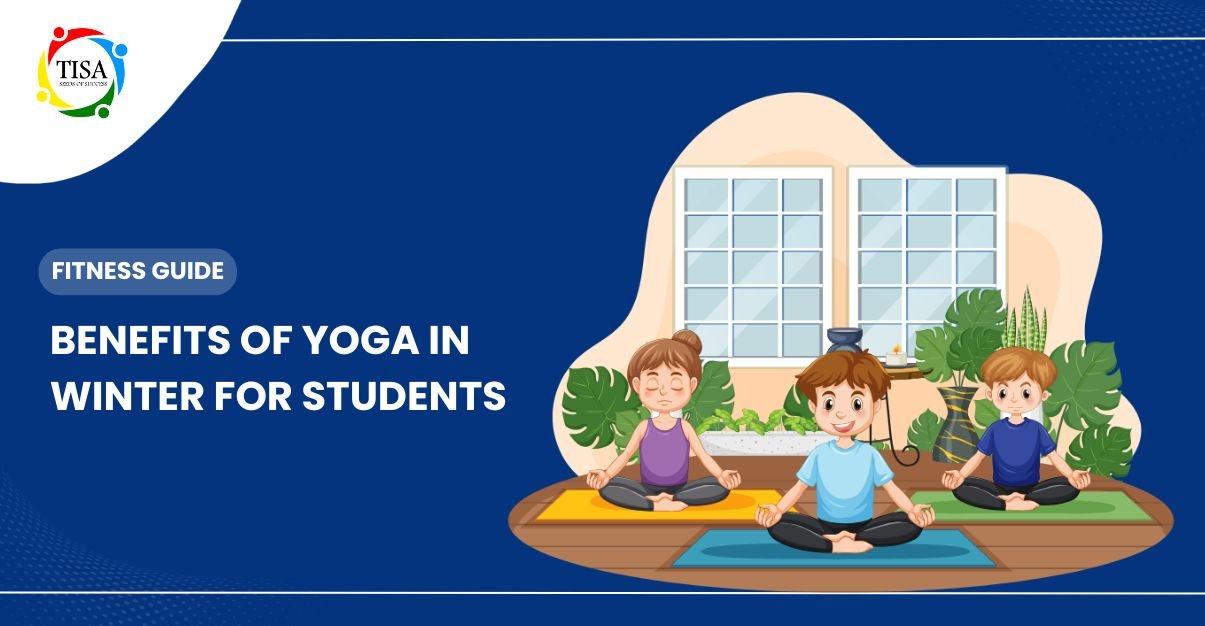Winter often brings chilly mornings, shorter days, and many challenges for students. From battling seasonal illnesses to dealing with reduced energy levels, staying healthy during this time can be tough.
However, yoga can align your body and mind, which can give you a needed boost to your immunity in winter. It is an ancient practice that has proven fruitful for one’s health.
In this blog, we will explore 13 incredible benefits of yoga in winter for students and why it is a practice worth incorporating into daily life.
Strengthens Immunity

During winter, your immunity takes a hit because colds and flu are quite prevalent in cold climates. Yoga can strengthen your immune system by stimulating the lymphatic system and improving blood circulation.
Improves Lung Function
Winter air is heavy and can sometimes feel restrictive to people with respiratory issues. This has especially become a problem post-COVID. Yoga poses such as Bhujangasana (Cobra Pose) and deep-breathing exercises like Pranayama help strengthen the lungs and improve oxygen intake. All these factors make it easier to breathe even in cold conditions.
Suggested Content: The Importance of Physical Education and Active Lifestyles for Students
Reduces Stress and Anxiety
The main objective of yoga is to align your body with your mind. This process helps calm your mind. In winter, people become lethargic and may feel like not doing anything. All this can put immense academic pressure on students.
So, to alleviate stress, regulating cortisol levels is important. You can achieve it with a few minutes of mindfulness and meditation. Practising it daily can bring clarity and peace, which can, in turn, enhance focus on studies.
Boosts Energy Levels

Winters have shorter daylight hours, which can often make students feel low and lack motivation to do anything. Yoga can help stimulate their body’s energy centres, helping them stay alert throughout the day. Each morning, a simple Sun Salutation routine, also known as Surya Namaskar, can work wonders in combating winter blues.
Improves Concentration and Focus
Students find it hard to concentrate on their studies during winter. This is because of the chilly weather, which makes you want to lie under the sheets. The best way to overcome this is through Yoga, which strengthens your mind’s ability to concentrate. Practising poses like the Tree Pose or meditation techniques can sharpen attention and memory.
Improves Digestion
Winter is all about consuming heavier and richer food items. Students also indulge in these types of food, which can be a little hard on their digestive system. Practising Yoga helps improve digestion by stimulating the digestive system through specific poses like the Bow Pose and the Seated Forward Bend. This ensures students can enjoy their favourite winter treats without discomfort.
Suggested Content: Why is TISA the Best School in Agra?
Maintains Flexibility and Strength
In cold climates, your body gets stiff, which reduces any sort of physical activity. Some yoga exercises can help keep your body active and your muscles and joints strong. Regular practice helps maintain flexibility, making it easier for students to stay physically active.
Improves Sleep Quality
Many Yoga exercises focus on maintaining your circadian rhythm. This is because most meditation involves calming the mind and aligning yourself with nature. So, the restorative poses and meditation practised in yoga can significantly help relax your mind and body. As a by-product, you also get restful sleep. Thus, it improves your sleep quality. A good night’s sleep is essential for students to stay productive and healthy.
Regulates Blood Circulation

Blood flow helps in circulating oxygen in every part of your body. Poor blood flow is quite prevalent in winter, and it can cause various health issues. Yoga poses and meditation to bring peace and harmony to your body and mind.
As a result, they help regulate blood flow in the body. Some poses, like the mountain pose, legs up the wall pose, the bridge pose, the chair pose, and the triangle pose, specifically target blood circulation in different parts of your body. Improved circulation also keeps the extremities warm, particularly during winter.
Encourages Mindfulness
Young students often experience absent-mindedness during school, which can make it difficult for them to focus on their studies. Yoga helps students connect with their inner selves better, which can help them stay alert and present in the moment.
Supports Mental Resilience
Nowadays, academic pressure is such that students need to have great mental resilience to protect their mental health. It is quite normal for students to face mental challenges such as low motivation or seasonal affective disorder during winter.
Yoga has proven to be an effective tool in building mental resilience. Due to this reason, many schools practice Yoga and breathing exercises during the assembly to keep their students calm and filled with a positive attitude.
Promotes Detoxification
Winter can lead to a buildup of toxins due to reduced physical activity and heavier diets. To detoxify your body, you can practise Yoga exercises that stimulate the digestive and excretory systems. You can start with Twist Pose. It helps flush out toxins, ensuring the body functions optimally.
Builds Discipline and Routine
Once you incorporate Yoga in your daily routine there is no going back. You will never be able to leave this practice. Of course, colder months can disrupt routines and make it tempting to stay in bed longer. But if you practice Yoga, it will instil discipline and ensure students remain committed to their physical and mental health goals.
How to Start Practicing Yoga in Winter For Students
To reap the maximum benefits of yoga for students in school, it’s essential to approach it with consistency and dedication. Here are some tips:
Provide a cozy area for the students indoors to practice yoga without distractions.
It would be great if students could start their day with Yoga, as it helps them maintain a positive mindset throughout the day.
Incorporate breathing techniques, such as Pranayama, such as Kapalabhati, and Anulom Vilom. These are excellent for enhancing lung function and immunity.
Students only need a session of 15-20 minutes daily. And it can make a significant difference.
You can also experiment with poses to keep the students interested. Include a mix of poses for flexibility, strength, and relaxation to keep your practice engaging.
Make Yoga a Part of Your Lifestyle
Once you make yoga a part of your lifestyle, it doesn’t only remain as a routine practice. Instead, it becomes a holistic way of living that aligns the body, mind, and spirit.
Students can greatly benefit from yoga, as it offers a sanctuary from the stresses of academics and seasonal challenges. This helps them stay resilient and focused.
So, if you are a student and dealing with academic stress, incorporate Yoga into your lifestyle. It will help you build a foundation for lifelong health.
Final Thoughts
The benefits of yoga for students are vast and deeply impactful, especially during the winter season. From boosting immunity to enhancing focus, yoga provides a comprehensive solution to students’ physical and mental challenges during this time.
Whether new to yoga or looking to deepen your practice, remember that consistency is key. So, roll out your mat, embrace the warmth of yoga, and take a step toward a healthier, happier winter. School administration should also incorporate Yoga as a daily practice for their students, as it will help them stay calm during stressful academic periods like examinations








